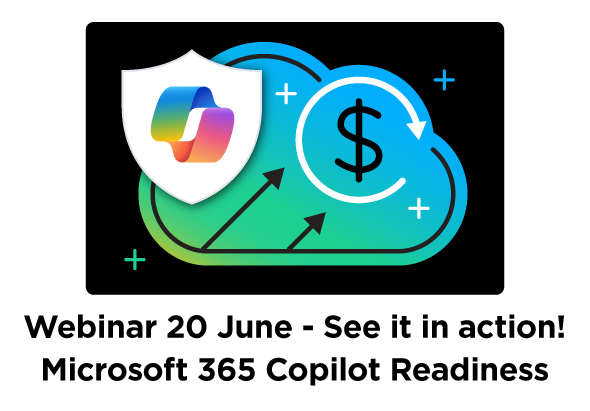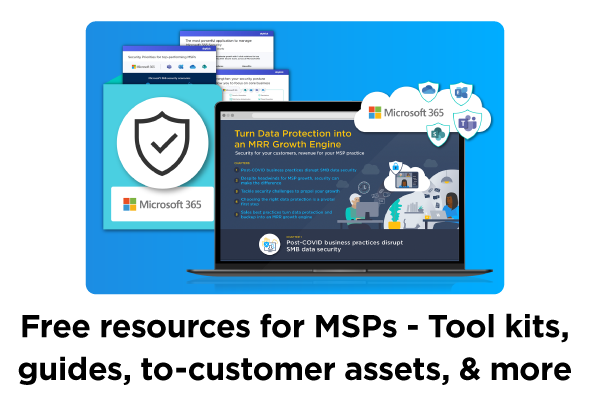Get ahead of cloud administration, Microsoft Teams, and cloud security with pre-built automation
The pressures of managing and growing a cloud business are only intensifying with soaring cloud adoption. With an increasing volume and complexity of cloud support tickets, leading MSPs indicate it’s more critical than ever to get the reactive help desk support workload under control. Doing so, frees up valuable resources to focus on strategic areas where you can double down on providing more value to customers and growing revenue. With Cloud Manager, pre-built automation helps MSPs accelerate their managed service business and reduce the reactive help desk workload.
In collaboration with some of our highest performing partners, SkyKick has packaged up pre-built automation and guidance to help partners get ahead in the cloud and win 3 strategic areas:
Streamline
|
Accelerate
|
Deliver
|
In this article, we take you through each of the three key strategies – including a preview of what automation and guidance is available for each.
Strategy #1: Automate cloud administration and improve help desk performance
Small MSPs spend 2,000+ hours on routine support tasks per year
A recent study of 500+ MSPs showed that routine Help Desk tasks can eat up 2,000+ hours each year, even with investments in support tools and documentation. An average SMB customer could be using 30+ SaaS apps – each with its own management interface and processes. With an average ticket resolution rate of just 54%, it’s no surprise MSPs are looking for more ways to help their Tier 1 quickly and accurately resolve tickets on the first call – thereby reducing frequent errors and escalations that require expensive senior resources. Technical leaders share concerns around consistency and standardization, as well as use of non-secure, manual processes in the help desk which are driving up risk and delivering a fragmented view of the customer and team.
Automate 60-70% of common support tickets with point and click solutions for Tier 1 technicians
By introducing the right automation and tools into the help desk, MSPs can ensure their team is consistently delivering high quality IT services and support, while keeping costs and security under control. In a recent study, we discovered that 70% of reactive support tickets resolve around 3 areas that are easily automated with Cloud Manager.

There’s a number of actions across these key categories you can quickly put into place within your support desk, including:
- Proactive scanning of mailbox health across Microsoft 365 to resolve issues before they start
- Discover, report, block, or release quarantined emails with greater efficiency
- Manage user access across popular SaaS applications, including Box, Dropbox, Google Workspace, Slack, Zoom, and more
- Create, configure, and manage Microsoft 365 groups with ease
- Report on vital Microsoft 365 user status and settings, from licensing to MFA status and more
Access the full Cloud Administration playbook and actions here.
Strategy #2: Accelerate strategic new workloads like Microsoft Teams
The challenge of supporting the entire lifecycle of Teams
Teams is transforming the digital workplace for SMB customers, with a 400% increase in Teams users since the start of the pandemic. With 145M users already in Teams and a healthy pace of SMBs still looking to move to Teams, MSPs are looking to tap into this lucrative workload, with a potential to add $15-20 for each seat under management. However, the viability of this workload hinges on the MSPs ability to deliver key technical elements from providing more secure, efficient deployments, as well as help desk and professional services readiness to build customer confidence and guide the adoption journey.
The winning formula is a combination of three vital moves
To play this opportunity right, MSPs are looking to bring automated-assisted efficiency into their Microsoft Teams practice.
-
- Key #1: Acquire large numbers of customers with efficient deployments
The first order of business is figuring out how to deploy Teams at scale. Cloud Manager provides automation based on Microsoft recommendations to perform whichever stages of deployment you need, including a strong baseline so your customers are set up with the right balance of security and usability. This can reduce a 2+ hour process across portals and PowerShell to just minutes the a codeless interface – no PowerShell expertise required.
- Key #1: Acquire large numbers of customers with efficient deployments
-
- Key #2: Provide differentiated services like high security deployments
While moving fast is critical, moving right is even more important. Beyond a commoditized Teams deployment built around baseline scenarios, partners can use automation in Cloud Manager to offer a more premium and differentiated offering with deployments that comply with the privacy and security requirements of more demanding customers.
- Key #2: Provide differentiated services like high security deployments
-
- Key #3: Assess Teams activity and empower Help Desk to drive user adoption
For many customers, the quick adoption of Teams combined with self-service capabilities has resulted in an almost unmanageable sprawl of Teams – making it difficult for users to find, access, and manage the data they need. This impacts user adoption – and the number of help desk calls and management tasks for you. We’ve pulled together automation that covers everything from reporting and taking action on Teams activity to responding to tickets like adding and managing channels, users, and more.
- Key #3: Assess Teams activity and empower Help Desk to drive user adoption
Access the full Microsoft Teams playbook and actions here.
Strategy #3: Deliver security solution to customers and drive recurring revenue
86% of SMB customers say cybersecurity is in their top 5 IT priorities
While security has always been a critical element of delivering cloud services, the expansion of remote work has made it an even higher priority for both partners and their customers. Research indicates over 90% of SMB customers would use an MSP if it offered the right security solution. Many MSPs see the opportunity to provide solutions to their customers but are held back with questions on technical expertise and/or business strategy. What is the right set of services to sell? Do I have technical depth on my team to offer and support these solutions?
Instill customer confidence by providing the right ongoing security solutions
A good strategy for offering security services should, at a minimum, include identifying the scenarios that customers find valuable and establishing a path to offer such services consistently, repeatably, and at a low cost. We have developed a simplified blueprint for a streamlined set of security offerings with a particular focus on the Microsoft 365 ecosystem and in 3 stages of the security journey.
-
- Phase 1: Assess & Configure
Build a solid foundation of security for customers by establishing a standardized baseline of security and information governance across customers. From assessing and configuring key Microsoft 365 tenant security factors to single-click application of Data Loss Prevention (DLP) to establishing data retention and protection policies that make sense for your customers’ business and regulatory needs.
- Phase 1: Assess & Configure
-
- Phase 2: Monitor & Review
Once you’ve set a solid baseline, it’s critical to keep an eye on user compliance with security measures like MFA across all customers and monitor ongoing security threats like Phishing that can impact critical user workloads like email.
- Phase 2: Monitor & Review
-
- Phase 3: Remediate and Resolve
As security threats emerge, the MSPs ability to respond fast, backed by an SLA, is a critical part of any security portfolio offering. Pre-built automation and monitoring capabilities in Cloud Manager make it easy to quickly remediate security gaps or issues across tenants, settings, and policies.
- Phase 3: Remediate and Resolve
Access the full Cloud Security playbook and actions here.
Infuse automation into your practice today
Download the playbooks and start your free trial of Cloud Manager to see how pre-built automation, built for how MSPs work, can help grow your cloud business. You can try any of the built-in scenarios highlighted in the playbooks or take it even further with your own automation.
Each of the three playbooks include 25+ specific customer-focused, time-saving workflow automations your team can execute today – plus proven best practices for infusing automation into your organization and jump-starting new offerings. Start exploring all that Cloud Manager can offer your MSP with pre-built automation for your help desk.
To start your trial, all you have to do is log-in to SkyKick Partner Portal, select Cloud Manager in the left navigation, and follow the trial setup process.


